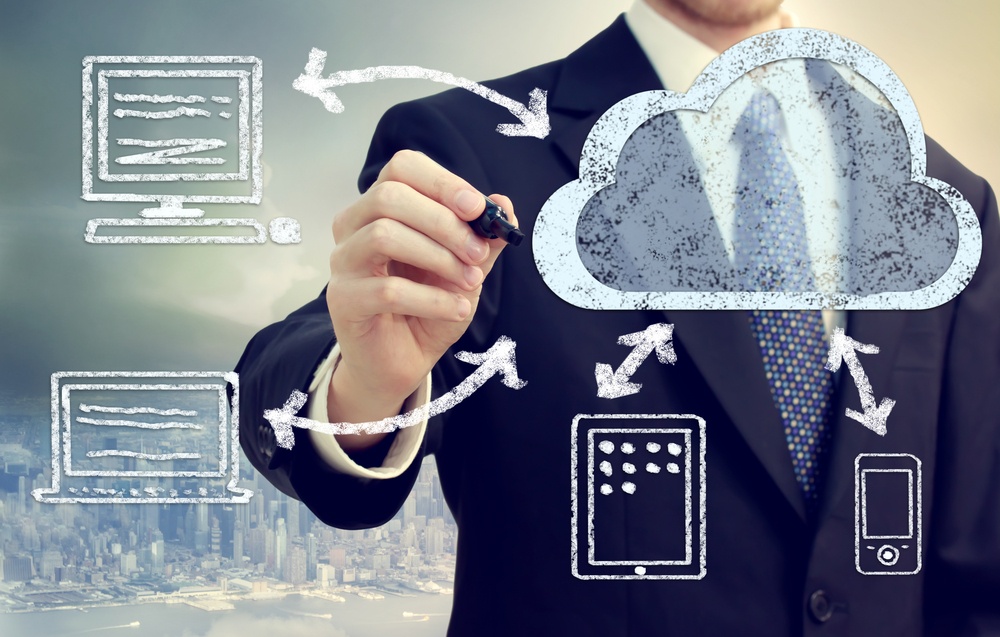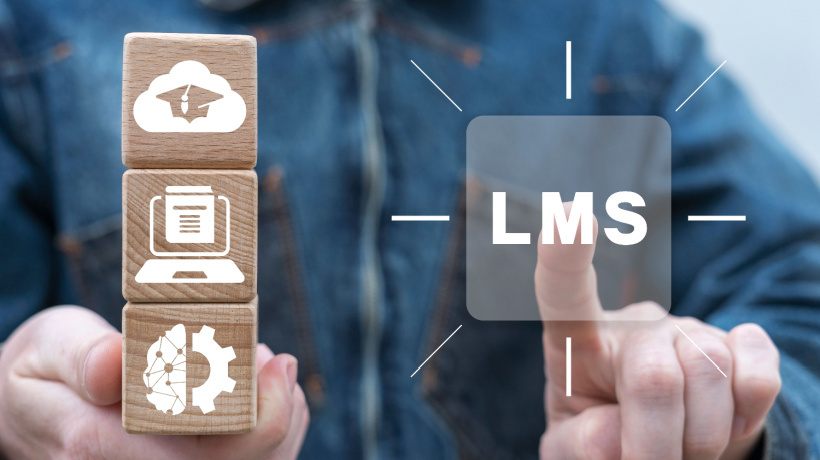Cloud Computing And Pricing Methods
Three cloud computing services relevant to eLearning include Infrastructure-as-a-Service (IaaS), Platform-as-a-Service (PaaS), and Software-as-a-Service (SaaS).
IaaS
IaaS lets users structure the software on a server from the ground up. IaaS gives access to network, operating system (OS), and storage settings. While IaaS gives greater control over a server, it also requires the greatest level of IT experience.
PaaS
PaaS also gives access to network, OS, and storage capabilities; however, many of the settings are already configured. PaaS also comes with many of the software tools needed for application development and deployment.
SaaS
SaaS is the end user product, which is usually presented to the end user via a website. In this model, the end user is not involved with the management, development, and storage of the product; they are simply using it.
If you purchase a commercial training solution, it will likely be a SaaS. And your training solution provider will perform IaaS or PaaS duties. However, if you develop your own platform, configuring and managing a server will be your company’s responsibility.
eLearning Price Models
This section discusses the pricing models of content authoring tools, LMSs, analytics, and cloud computing.
Content Authoring
The pricing structure of many content authoring tools can be separated into two categories: cloud-based or locally hosted. If it is cloud-based, it is usually one of the following models, pay-per: designer, data storage space, project, month, or year. Some of these pricing models can also be combined. For example, a cloud-based model may provide a one-year license for one designer with up to 50MB of space. If it is locally hosted, it is usually pay-per: download, computer, month, or year.
Regardless of the pricing strategy, the cost of content authoring tools will largely depend on their functionality (e.g., number of tools, type of tools, robustness of tools, ease of use, communication standard employed, and whether or not they are cloud-based). Some additional costs of content authoring tools may include training, staffing, hosting, installation, customization, maintenance, and support.
There are also freemium and open source content authoring tools available. Freemium content authoring tools offer a limited set of free features and then apply one of the locally hosted or cloud pricing models for additional features. Open source tools do not have any licensing fees, however, that does not mean it is a free solution. Some costs associated with open source tools may include “installation, customization, and support [1]."
It is also important to evaluate the longevity and level of documentation of an open source solution, as a lack of either could “make a product difficult to install, use, maintain, and troubleshoot [1]." The pricing strategy of LCMSs is similar to cloud-based content authoring tools. The main difference is that you will be charged for the additional features found in LCMSs. And LCMSs might also have two different user prices: one for designers and one for trainees.
Learning Management System
The costs associated with integrating an LMS depend on the type of LMS. These models include license, pay-per-user, pay-per-use, and freemium. Some of these models include a variety of services (e.g., hosting, analytics, and content authoring) and others do not. When evaluating these models, it is important to know what services are being offered. It is also important to know if there are additional costs. Some additional costs may include the setup or customization of a platform, upgrading to a new tier as more users are added, site maintenance and updating, and technical support.
The licensing model can be broken down into two categories: perpetual and temporal. The perpetual model is a one-time fee to own an LMS. The temporal license is a flat fee for a period of time, usually on a month or annual basis, for a particular software offering. This pricing model may offer tiers for a certain number of users or offer unlimited access.
The pay-per-use model charges based upon users accessing certain content or finishing certain modules. The pay-per-user model can be broken into two categories: active and non-active. This model can be offered in tiers or based upon individual users. In this model, it is important to know whether the records of users are stored and accessible. In the active-user model, a customer will only pay for active users. Active users are defined by the provider. They can be those that have logged in or accessed content in the last month or the last year.
The non-active user model charges based upon all users that have created an account. The freemium model gives you limited functionality and use of an LMS for free. If more functionality is desired than what’s being offered, users are usually given the option to upgrade to a paid tier (like one of the ones listed above).
Analytics
The cost of analytics depends on two things: the functionality of the LAP and the method of implementation (i.e., build it yourself, integrate open source, or purchase a solution).
Building your own LRS and LAP is an intensive process. For example, when building an LRS there are “more than 1000 individual…functionality tests” that need to be performed [2]. Because these processes are uncommon and require a lot of resources, we will not go into detail about them here. However, if you’re interested in more information on how to build your own LRS, here is a good resource.
LAP solutions utilizing xAPI will need an LRS. LRSs are usually not that expensive, many are open source and others are offered for free by some LAP companies. The price of LAPs varies greatly. The cost associated with open source LAPs may include integration, updating, and maintenance. And the costs of purchased solutions are usually based upon their interface and functionality (e.g., does it feature dynamic, specific, ad-hoc, or hybrid reporting capabilities?).
When evaluating LRSs and LAPs, it is important to understand the extent of functionality and the quality of the functions being offered. It is equally important to understand what your company’s analytic needs are, as the costs associated with LAPs can be substantial.
Cloud Computing
Cloud computing is continuously evolving. And as this industry and the technology change, so will the pricing. Currently, there are many different pricing models available. We will, however, only cover a few of the common ones used for eLearning. Also, be aware the terminology defined in this part of the section is to give a general understanding of cloud computing. Sometimes these words may be used to convey a different meaning.
Cloud computing pricing can be broken into two categories: fixed and dynamic. Fixed models are a set amount for a service the customer and provider agree upon. Dynamic models are “calculated based on [a particular] pricing mechanism [e.g. supply and demand] whenever there is a request [3]."
Some of the fixed pricing models include pay-per-use, subscription, and hybrid. In the pay-per-use model, you only pay for what you use (i.e., it is an elastic price). Most companies using IaaS tend to use this model. This model is sometimes cheaper than a subscription-based model, however, the cost per unit of service may be more expensive; so as usage increases it may become more expensive.
The subscription-based model gives access to unlimited cloud services, however, if there are some months (or years, depending on the time-frame of a subscription) where fewer resources are used, the price is still the same, resulting in a higher price per unit for that period of time. This service is most popular for SaaS.
The hybrid-based model is a combination of the pay-per-use and subscription model. In this model, a user begins with a certain amount of resources for a particular price. The user will be charged for this amount regardless of whether they use it (similar to the subscription model). If the set amount is exceeded, a new price per unit may be charged (similar to the pay-per-use model). Depending on the resources used, a user could also be knocked into another subscription-based tier, with another set price for a particular quantity of resources.
Determining which pricing model and provider are best for your company’s cloud computing needs will take some research. Before conducting research it will be good to have a general idea of what type of training solution would be best for your company and what the requirements of that solution are. One benefit of purchasing a commercial solution is that the cloud architecture and hosting are usually taken care of.
Please leave a comment below or reach out to the author for source citations. This article is Part 4 of a four-part series, read Part 1, Part 2, and Part 3.
References:
[1] Choosing Series
[2] Get an LRS
[3] Pricing Schemes in Cloud Computing: An Overview
Sources:
- Fernandez, Alberto, Daniel Peralta, Jose Manuel Benitez, and Francisco Herrera. n.d. “An Overview of E-Learning in Cloud Computing.” ResearchGate. Accessed
- “Cloud Computing – Types of Cloud -.” 2018. July 6, 2018.
- Candrlic, Goran. 2013. “Types of Cloud Computing Explained | GlobalDots.” GlobalDots - CDN, Security and Performance Solutions (blog). March 19, 2013.
- Solomon, John. 2012. “Understanding Different Types of Cloud Computing and Their Benefits.” Chargebee’s SaaS Dispatch. December 10, 2012. <https://www.chargebee.com/blog/understanding-types-cloud-computing/.>
- “Types of Cloud Computing.” n.d. Amazon Web Services, Inc. Accessed January 27, 2019.
- Avoyan, Hovhannes. 2009. “3 Types of Cloud Computing Services.” Monitis Blog (blog). September 10, 2009.
- “Types of Cloud Computing - Definition | Microsoft Azure.” n.d. Accessed January 27, 2019.
- Sharma, Nipun. 2018. “LMS Pricing: 6 Different Models To Consider.” ELearning Industry. March 23, 2018.
- Williams, Debbie. n.d. “Evaluating LMS Pricing Models: What Is Best for Your Organization?” Accessed January 27, 2019.
- W, Jill. n.d. “LMS Pricing Models: How Much Does an LMS Cost? | SkillBuilder LMS.” Accessed January 27, 2019.
- “What Are the Different Pricing Models for an LMS?” n.d. Accessed January 27, 2019.
- Ferriman, Justin. 2017. “6 LMS Pricing Models Explained.” LearnDash (blog). January 19, 2017.
- “Get a Learning Record Store (LRS) to Support XAPI in Your Application.” n.d. XAPI.Com. Accessed January 27, 2019.
- “How to Build Your Own XAPI LRS (Learning Record Store).” n.d. XAPI.Com. Accessed January 27, 2019.
- Castell, Ethann. 2013. “The Present and Future of Cloud Pricing Models.” Cloud Computing News. June 12, 2013.
- Mazrekaj, Artan, Isak Shabani, and Besmir Sejdiu. 2016. “Pricing Schemes in Cloud Computing: An Overview.” International Journal of Advanced Computer Science and Applications 7 (2).







